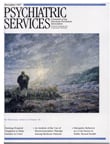Innovative Idea
In his private practice of psychiatry in Santa Barbara, California, John M. Ackerman, M.D., uses acupuncture to supplement traditional treatment and assessment techniques. Although the exact mechanism by which acupuncture produces its therapeutic effects is unknown, research has shown that it is associated with alterations in secretion of neurotransmitters and neurohormones. Dr. Ackerman has used auriculur acupuncture—in which sterilized or disposable needles are inserted skin deep into specific points of the outer ear—as one of the initial steps in addiction rehabilitation. For patients undergoing outpatient detoxification, the acupuncture treatment facilitates elimination of substances, improves mental clarity, and reduces physical and emotional symptoms so patients can more readily benefit from psychotherapy.
As part of the diagnostic process for a range of conditions, Dr. Ackerman combines traditional history taking with a radial artery pulse technique, first developed by French neurologist P. F. M. Nogier in the 1950s. This technique, which makes use of the vascular autonomic signal, can guide the clinician to the exact location of acupuncture points. Variations in the vascular autonomic signal, which are detected by palpating the tonal changes of the radial artery muscular wall, may suggest that the patient has nutritional deficiencies that could reduce the effectiveness of medications or increase the severity of side effects.
This information is used to guide the clinician toward refinement of nutritional or pharmacologic intervention or both. For the past 12 years Dr. Ackerman has used these complementary techniques with patients who are interested, as an additional guide in treating a variety of acute physiological imbalances such as migraines as well as insomnia, anxiety, depression, and attention-deficit hyperactivity disorder. (John M. Ackerman, M.D., 2417 Castillo Street, Santa Barbara, California 93105.)



